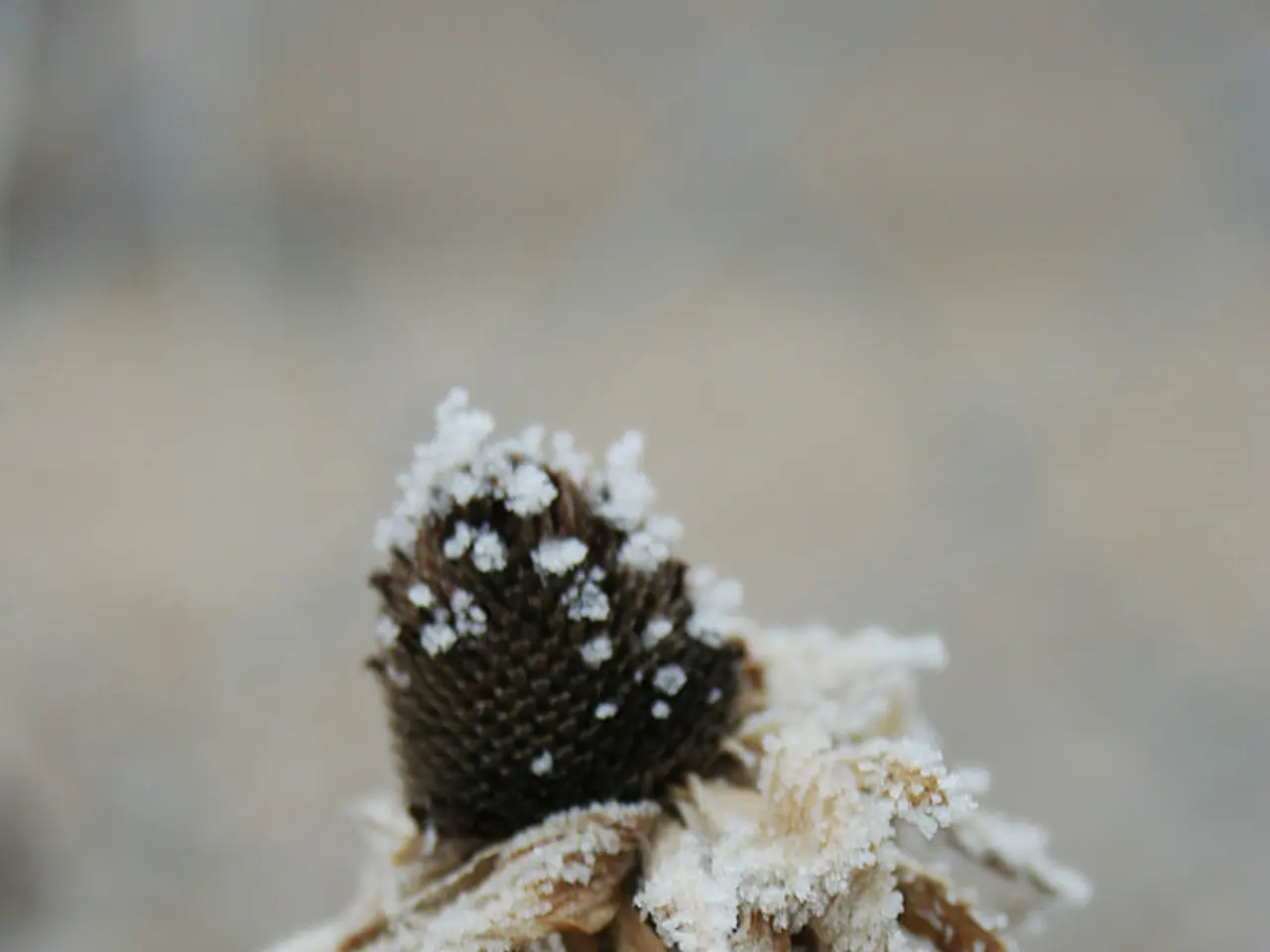Winter Plant Insulation Techniques: Crucial Advice for Preserving Your Potted Plants
In the colder months, it's essential to take extra care of your potted plants to ensure they survive the freezing temperatures, dry air, and sudden weather changes. Here are some tips to help your potted plants thrive during winter.
Glen, an experienced gardener with over 15 years of hands-on experience in garden maintenance, design, and landscaping services, has shared his wisdom on how to protect your plants. He has written several helpful posts for a blog, including articles about garden fungicides, candy cane peppers, and watermelon harvesting.
One of the key steps is to wrap the pots using insulating materials like burlap, jute fabric, or specialized plant wraps to protect the container from freezing temperatures. Another effective method is to add insulating layers inside or around the pots using materials such as Styrofoam or polystyrene sheets to improve thermal protection.
Mulching the soil surface with 2–4 inches of straw, shredded bark, or pine needles can also help insulate roots and retain soil moisture. It's important to water plants deeply before the ground freezes and continue occasional watering throughout winter until the soil freezes solid.
When temperatures freeze, bringing potted plants indoors is vital, but matching the plant's cold hardiness to the indoor environment is important. A spare room with a cool temperature can be used to overwinter plants without disturbing living space. Using a clear plastic cover can create a mini greenhouse effect, trapping heat and preventing frost formation.
Choosing frost-resistant containers (fiberglass, heavy plastic, stone) since terra cotta pots can crack in freezing weather is also crucial. Larger pots retain heat longer than small ones, which can help sustain the plant's roots during chilly nights.
Transiting plants gradually to prevent shock when moving them back outside is important. Wrapping pots with insulating materials like straw, leaves, or old blankets can help insulate them. Staking taller potted plants for added support can prevent snow and ice from breaking branches or damaging leaves.
Additional tips include securing covers well to prevent cold air intrusion by weighing edges down with bricks or soil. Using thermal mass (such as water-filled containers) near pots outdoors to release heat at night can be beneficial. Avoiding pruning in fall to prevent tender growth which won’t survive frost is also advised. Applying antidesiccants to broadleaf evergreens to reduce winter wind damage is another useful strategy.
By integrating these strategies, you create a warmer microenvironment around potted plants that improves their winter survival odds. Containers made from insulative materials like thick plastic, wood, or polystyrene offer better protection against the cold. Insulating potted plants with burlap or old blankets can act as a cozy barrier against the biting cold.
It's important to avoid placing plants near heat sources, as they can dry out. Winter can be challenging for potted plants because their roots are exposed to colder air above ground. Grouping potted plants together can help them retain heat. Maintaining a consistent moisture level in the soil is crucial during winter to prevent the combination of freezing temperatures and dry soil from being lethal to the roots.
By following these steps, you can effectively insulate your potted plants during winter and increase their chances of survival.
[1] Source: GardenGuides.com [2] Source: TheSpruce.com [3] Source: GardeningKnowHow.com [5] Source: MotherNatureNetwork.com
Read also:
- Exploring the Advantages of Outdoor Group Meditation for Enhancing the Mind-Body Union
- Hidden beneath the appealing aesthetic of Consume Me's artwork lies a more ominous nature
- Reflection: Ponder the Fate of City Pigeons
- Sustainable Seafood Consumption: An Examination of Environmental Impact: A Guide for Seafood Lovers





